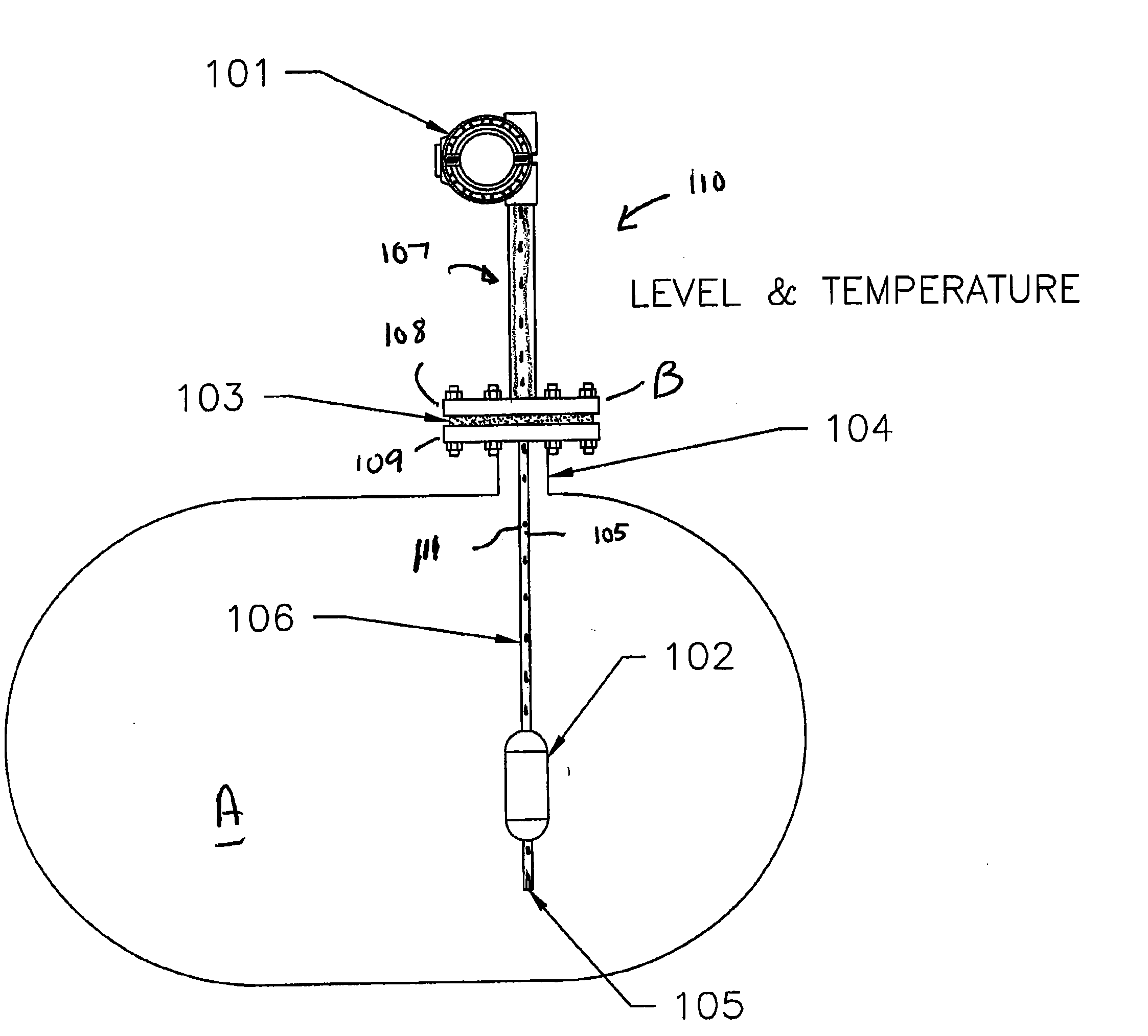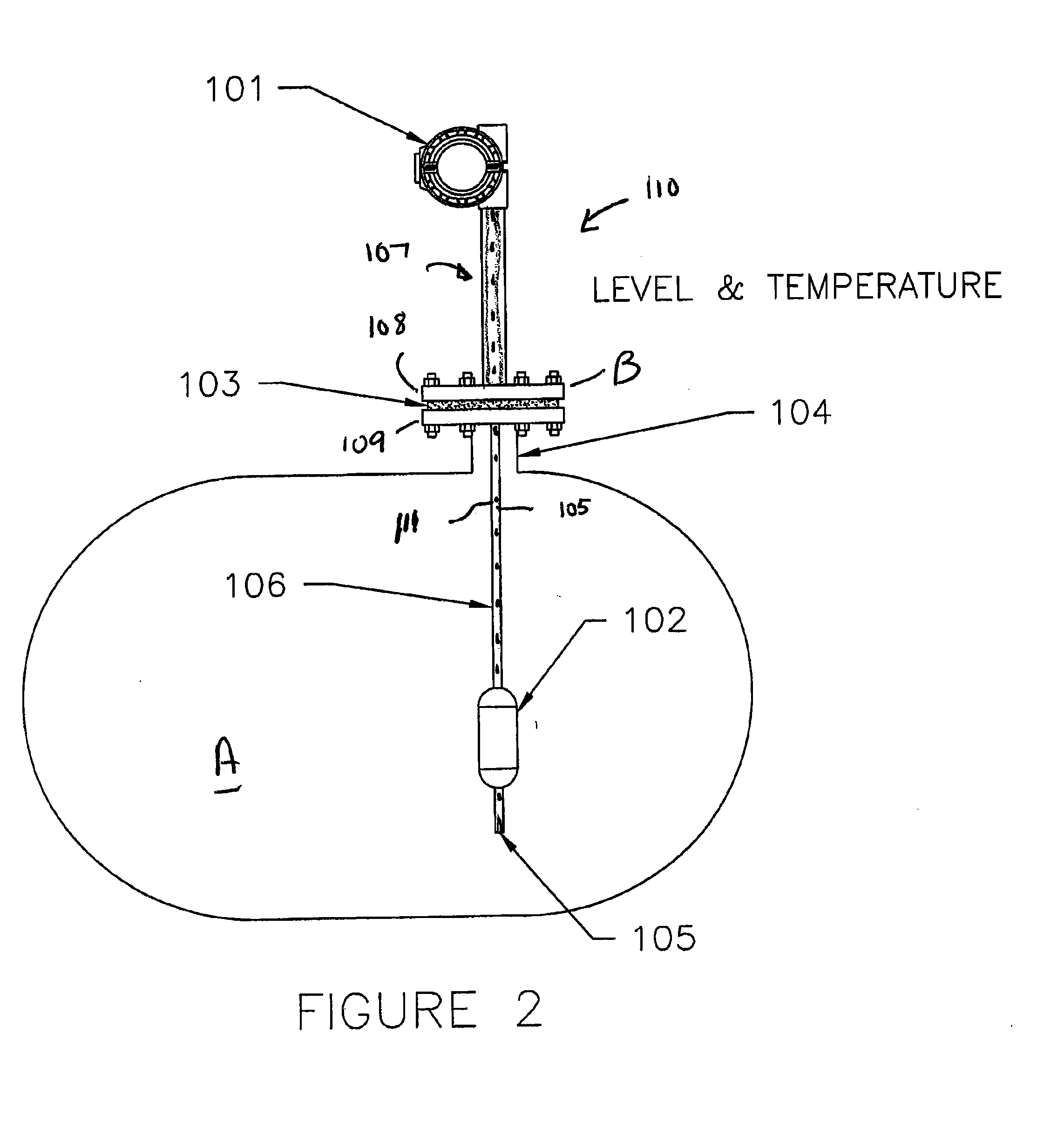Process Tanks in Combination with a Float Magnetostrictive Level Detector
a level detector and process tank technology, applied in liquid/fluent solid measurement, instruments, machines/engines, etc., can solve the problems of difficult and accurate detection of fluid levels, unsuitability of direct detectors, ultrasonic, guided wave and other direct detectors, etc., and achieve the effect of steady level measuremen
- Summary
- Abstract
- Description
- Claims
- Application Information
AI Technical Summary
Benefits of technology
Problems solved by technology
Method used
Image
Examples
Embodiment Construction
FIG. 2 is a schematic of a flashing process tank with a direct level measurement device installed therein. Not shown on any of the drawings is the direct read visual indicator (sightglass), which is required by code in a boiler application. Tank A has a level detection system 110 with the sensors contained within the tank interior, and not in an external chamber. The level sensor system 110 requires a single flanged area 103 on the tank, as the system 110 combines a level sensor with a temperature probe 105 in a single probe. The level detection system 110 includes a magnetostrictive level sensor that uses a float 102 with internal magnet(s) that interacts with a magnetostrictive wire 111 contained in the guide well or sensing tube 106. The guide well 106 is a sealed tube, and hence the interior of the tube (including the wire 111) is not exposed to the tank process liquid. Attachment of the sensor to the flange joint will be discussed separately.
The operations of a magnetostrictive...
PUM
 Login to View More
Login to View More Abstract
Description
Claims
Application Information
 Login to View More
Login to View More - R&D
- Intellectual Property
- Life Sciences
- Materials
- Tech Scout
- Unparalleled Data Quality
- Higher Quality Content
- 60% Fewer Hallucinations
Browse by: Latest US Patents, China's latest patents, Technical Efficacy Thesaurus, Application Domain, Technology Topic, Popular Technical Reports.
© 2025 PatSnap. All rights reserved.Legal|Privacy policy|Modern Slavery Act Transparency Statement|Sitemap|About US| Contact US: help@patsnap.com



